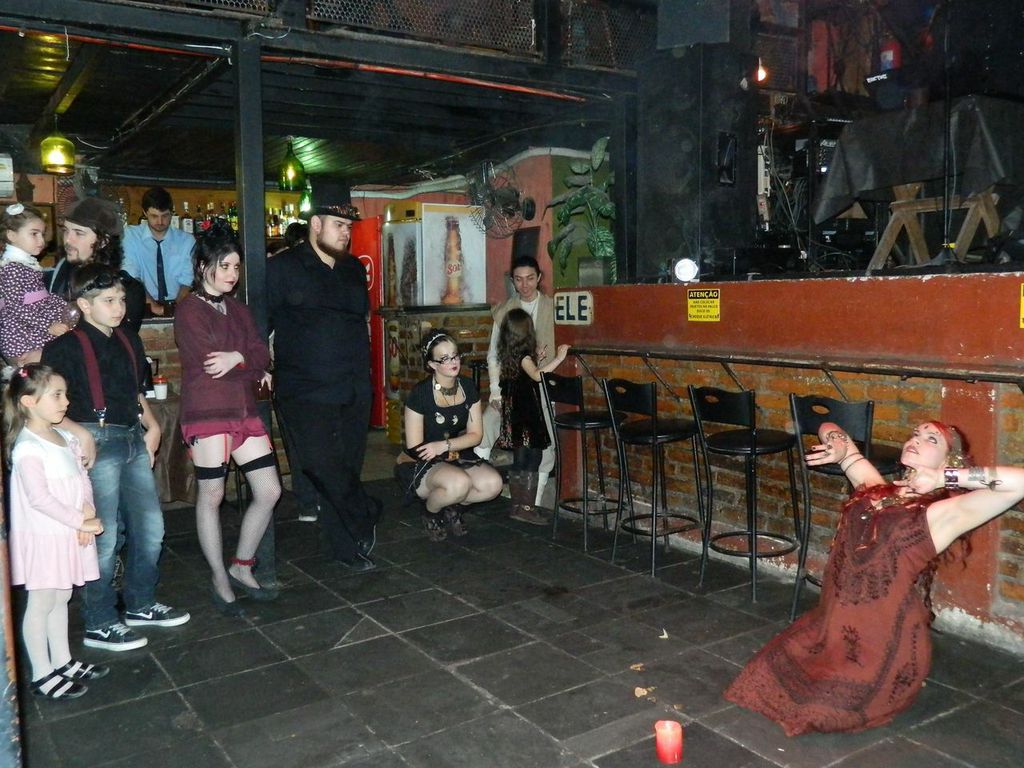Where Fandom Studies Came From: An Interview with Kristina Busse and Karen Hellekson (Part One)
/Much has been written in recent years about 1991-92 as a kind of moment of birth for Fan Studies, a year in which key texts by Constance Penley, Camille Bacon-Smith, Lisa A. Lewis, and myself, helped to establish the study of fandom as a distinctive research project, emerging from the study of subcultures, readers, or audiences, all paradigms with a longer history in British Cultural Studies and elsewhere. I was flattered that the Journal of Fandom Studies published a special issue recently considering the impact of my book, Textual Poachers, on the field, and you can read my own reflections about the origins and potential futures of fandom studies in the current issue of that same journal. But today's post is intended to challenge this framework in two different ways. First, I would make the case that 2006-2007 was an equally important period for the development of the field, marked by the publication of two key anthologies -- Karen Hellekson and Kristina Busse's Fan Fiction and Fan Communities in the Age of the Internet: New Essays and Jonathan Gray, Cornel Sandvoss and C. Lee Herrington's Fandom: Identities and Communities in a Mediated World. For there to be a field of Fan/Fandom Studies, there must in fact be not simply a few singular contributions but a large group of people doing original work in that space. While there were certainly new writers (Nancy Baym and Rhianon Bury being key figures) emerging in the decade plus between these two historic moments, there had also been a tendency for many other writers to fill in the broad outlines which had been mapped by the 1991-92 wave of publications. Often, there was still a cycling through of various justifications for studying fans and then a few quotes from our writings coupled with a new set of examples, arriving at more or less the same conclusions. These 2006-2007 collections represented the arrival of a new generation of scholars who were coloring outside those lines, who represented important new voices and new perspectives, who pushed the field forward, and who established it as an ongoing academic pursuit.
I remember my excitement reading through these two books, my head spinning, and feeling like I was learning something new on every page. The works represented distinctive visions of what this field would look like -- one doubling-down on the female-centered fan writing community as the locus of study even as it dealt comparatively with other communities from which transformative works were emerging, and the other expanding the scope of what kinds of fans we studied to bring together global and historical perspectives as well as a conversation between those who studied fans of cult media, popular music, sports, and even news and politics. There's been some tension between these two approaches ever since. Almost a decade later, Gray, Sandvoss and Herrington are in the process of updating their collection while Hellekson and Busse have released their own second edited anthology, The Fan Fiction Studies Reader, which seeks to map key influences on the field of fan fiction studies.
And that brings us to the second thing that the focus on 1991-92 as the birth of fan studies may get wrong. The Fan Fiction Studies Reader is focused in expanding this time line in important ways, calling attention to the kinds of writing on fan fiction that existed prior to Enterprising Women or Textual Poachers, work that often came out of the second wave of feminism and was also embedded in the fan community itself. Many of these essays have been out of print or scattered across obscure journals so there is an enormous contribution in bringing them together again, reframing them for contemporary readers, and reappraising their contributions to the early development of this field.
There's been an unfortunate tendency, which I have probably contributed to in some later interviews, to dismiss the work of earlier scholars as patronizing and pathologizing. There is certainly much such work to be found. But there was also work that was celebratory, seeking to understand fan fiction as forms of women's writing, seeking to debate the ways fans were remixing pornography or erotica to reflect female tastes and interests. If you look closely at Textual Poachers, NASA/Trek and Enterprising Women, we cited and engaged with this work, but it has since been largely neglected by later generations of researchers. And this collection shows us that there is much to be regained by reconnecting with this past.
This week, I am interviewing Kristina Busse and Karen Hellekson about the two books, their contributions to the field of fan/fandom studies, and their perspective on some of the key issues being debated by fans and fan scholars in 2014. Busse and I have not always agreed about the directions that fan studies should be taking and some of our exchanges have been heated and public but I have always had deep admiration and respect for the leadership that Busse and Helleckson have brought to this field, not only through these two collections, but also through the publication of Transformative Works and Cultures, a scrupulously peer-reviewed and highly influential online journal which has kept alive the project of their first anthology in terms of identifying new authors, new topics, and new approaches to the study of fandom.
Fan Fiction and Fan Communities in the Age of the Internet came out almost a decade ago and looking back on it, it has turned out to be a watershed book in many ways. For one, you helped to bring together a generation of newer writers who represented the next wave of fandom research and we are now starting to see full-length books emerge from many of these scholars. Can you share with us how that book came to be and what brought this particular group of writers together?
KH: I initially pitched the original-essay book myself, without Kristina, to a press that had published a previous book of mine. However, just putting a call for papers out there does absolutely nothing. You have to solicit. I did some of that, but I quickly realized that the book as I had envisioned it wouldn't come to be unless I brought in a coeditor. Kristina has a wide network, and I have the knowledge and contacts for book production. We'd met at International Conference of the Fantastic in the Arts in 2003 and had chatted, and once I asked Kristina to come on board, the project finally took off. That division of work is one we have maintained since: Kristina does front-end stuff, like solicitation, and I do all the scheduling, paperwork, copyediting/proofreading, and back-end stuff related to actually getting it into print.
I wanted the book to reflect my wishes for scholarship in the field: something timely, something that reflected changes in consumption of fan-written texts (i.e., the Internet), and particularly something where the writer didn't have to justify herself. Fan studies was like the field of science fiction literature studies (my original field) all over again: writers were expected to spend time explaining why they were bothering with a low-culture trash genre, and they also had to position themselves in relation to the field—in particular, if they were fans, this needed to be disclosed and scholars had to distance themselves. SF had discarded these conventions, in part because writing about it became more mainstream and in part because SF scholars created venues dedicated to the field, such as academic journals, where background and justification could be dispensed with. I wanted the edited volume to reflect this. It seemed to me that fan studies scholars kept having to have the same conversation over and over again: justification, distance, and then lit review. We needed to create a space where we could dispense with that and use the words to have an actual conversation.
However, we did think that we needed to create a common vocabulary and a common—well, I guess the word would be canon: texts we'd all read and agreed were relevant. Our introduction provided these elements, which were common to all the papers we collected. This allowed us to create a good bibliography, which the press agreed to let me put up on my Web site. The contributors were thus able to use their words for their ideas, not for context or lit review. At the time, this was a major win. I think we moved the field forward in this regard: we just assumed this was all important, and by framing the book as we did, we made it so.
KB: We were at the International Conference of the Fantastic in the Arts in 2005, and we were having these amazing discussions there and on LiveJournal and people were writing amazing essays, and we weren't seeing any of those folks getting published or any of those ideas explored. I don't think there was a single essay out yet that had dealt with the change in fannish infrastructures, like the switch from Usenet to mailing lists and archives to blogs and LiveJournal. Most of us—me and Karen and the contributors—had met or knew one another through mailing lists or through LiveJournal.
We were very clear early on that we were tired of essays starting with definition of fan fiction and basically looking at a given text and saying, "Look, there, homoerotic subtext and SLASH!!!!" We agreed that we needed a framing introduction with all the terms and the history so that the essays could start within the discourse rather than spending half the time getting to their argument. But we also wanted the history and a shared resource so that everyone else could look at what had come before and where we were heading now and be on the same page. We were standing in a hotel hallway with Francesca Coppa, debating whether we should do it as two volumes, one with new essays and one a reprint anthology. It took us eight more years to finally get the second half out.
We got the majority of the essays via direct solicitation. Most—nine of the 13—were people I was friends with on LiveJournal. A few essays didn't work out, which is par for the course; the RPF popslash essay wasn't supposed to have been mine but we needed to fill a hole. We decided that these were all topical essays, and given that production would take a year, we imposed a deadline of less than a year for essay delivery. From having the idea to having the book in our hands took about two years, which is very fast for academic publishing. But all these acafans were giving papers that they couldn't find a venue to publish. The ideas were just there to be caught. We had a lot of grad students and unaffiliated folks among the contributors—I think only four of the 13 were tenure-track scholars. But that's where there often are the most interesting and novel ideas.
The other thing that made this collection different and that we thought was really important was the fact that we all self-identified as fans. You had already brought in the fact in Textual Poachers (1992) that a central part of your identity was being a fan as well as an academic, and Matt Hills did his long autoethnography in Fan Cultures (2002). We decided to take that for granted. A lot of us had been fans and active in media fandom long before we were academics, and many of us came to fan studies through fandom rather than through media studies. We wrote our love into these essays and displayed our fandom affiliation in every sentence. That seemed to be different to a lot of the research that was happening at the time.
Beyond the individuals involved, the book also helped to reframe fan studies, opening up some important new paradigms—such as Francesca Coppa's focus on fan fiction as performance or Gail De Kosnik's focus on fan fiction and "the archive", some reconfiguration of how this research related to gender and sexuality studies, a new focus on the literary dimensions of fan fiction, but also an engagement with the conditions of cultural production within fandom. I still find great value in your reminder that fan fiction is by its nature always a "work in progress" and that it is hard to understand fan fiction outside of the social relationships it helps to facilitate. Looking back, what do you see as the lasting conceptual impact of the book on our field?
KB: One (of the many) things that fandom and academia share is the ability to have many things be true at the same time. Collectively, we write hundreds different versions of what goes through our characters' minds during a given crucial scene, and we give ever new interpretations of Hamlet during his major soliloquy. We (well, many of us :) can simultaneously ship Tony/Steve, Steve/Bucky, and Bucky/Natasha, and there's this great Bedford St. Martin's series that presents a given literary text with about a dozen different theoretical approaches (like Marxist, feminist, psychoanalytic, postcolonial, queer readings of Heart of Darkness). And even as they are sometimes mutually exclusive, they are also ALL VALID. If our collection has had any conceptual impact, we hope it is that understanding of WIP not only for fandom and academia, but also for fan studies in particular. We are realizing that there are huge gaps in areas we have not paid enough attention to, such as Critical Race Studies, Transculturalism/Transnationalism, and Marxist Labor Theory, to name just a few, and if the collection was ever supposed to be anything, it was a snapshot of that moment.
Maybe the most lasting impact of the book ended up being more logistic than conceptual: we were asked to found and edit the OTW's academic journal, Transformative Works and Culture, which publishes its 17th issue in September for a collective of around 300 essays. Doing Fan Fiction and Fan Communities together gave us experience, credibility, and an acafannish community. You can see most of the contributors to the collection pop up again as contributors, editors, and peer reviewers. In a way, it is TWC that should be seen as the ever-expanding archive of the book itself. It's a snapshot on so many levels: in terms of the fandoms that are used, such as Harry Potter, LOTRips, poplash, or even just in terms of interfaces, such as two essays focusing specifically on LiveJournal.
Moreover, as we already said, part of the intention of the collection was to create a text where everyone started from the same fannish and academic point to a degree. Our introduction is quite different from Gray, Sandvoss, and Harringon's "Why Study Fans?" (2007), but that makes sense, because we start from such a different point and have a slightly different focus. We never really question why we should study fans, because we think we are important :) But also, our focus is somewhat narrower, for better or worse. We clearly don't subscribe to the large "everyone is a fan" definition, and we are primarily focused on what Coppa has termed in her overview in the book "media fandom," i.e., creative fan works for Western live-action shows and connected fandoms. That means that we purposefully limited ourselves, but it also means that we can focus on a given field and explore it in all its facet and with all these different approaches. And we can go deep and far, because we don't need to explain what beta readers are or why Mary Sues are a highly contested genre.
KH: I'm glad the book helped reframe fan studies. I knew the book filled a hole in scholarship, if only for its acknowledgment of new modes of fannish consumption. However, what we did was simply let scholars be free to work in their field, combined with fan studies. Its lasting conceptual impact is merely that fan studies is not an offshoot of media studies. Rather, fan studies is a multidisciplinary field that can easily integrate other -isms and other disciplines: feminism, Marxism, sociology, anthropology, close analysis of a fan-created text, reader-response theory, affect, performativity, deconstruction, posthumanism, queer theory… Further, it's an interesting site for application of theory, be it Schechner or Derrida.
Another important conceptual impact is that we are unapologetically fans ourselves. I write fan fiction and maintain a fic archive; I have helped create content for a fan-created informational wiki; I ran few multiauthored virtual seasons after my show was canceled. I don't just read about this stuff; I live this stuff. The connection with the fan community has led us to do certain things, like (as for TWC) not hotlinking directly to spaces that fans perceive as private, or checking with a fan before we publish a link to a story in case the author wants us to hotlink to some other space, or not hotlink at all.
I am not interested in expanding the notion of the fan to include all aspects of what may be termed fannish behavior. Fans of stamp collecting or sports may engage in a sort of fandom, but they don't tend to call it that. They may also configure their engagement and their passion differently. The word fandom may properly be applied to these activities, but to my ear, the connotation isn't right. Broadening fan studies to all aspects of "fanatic" behavior merely because the activities match what the term denotes is certainly a valid point of view, but it's not my point of view because I am interested in what it connotes and how fans work to build that connotation. The term also comes out of SF literature fandom, which I have studied, and in some ways I want to acknowledge fan studies' outgrowth from SF fandom. Media fans adopted fanzines, apas, and other modes of dissemination from SF fans.
Kristina Busse has been an active media fan for more than a decade. She has published a variety of essays on fan fiction and fan culture and is, with Karen Hellekson, founding coeditor of the academic journal <em>Transformative Works and Cultures</em>.
Karen Hellekson (karenhellekson.com) is, with Kristina Busse, founding coeditor of the academic journal <em>Transformative Works and Cultures.</em> She has published in the fields of alternate history, science fiction literature, and fan studies.



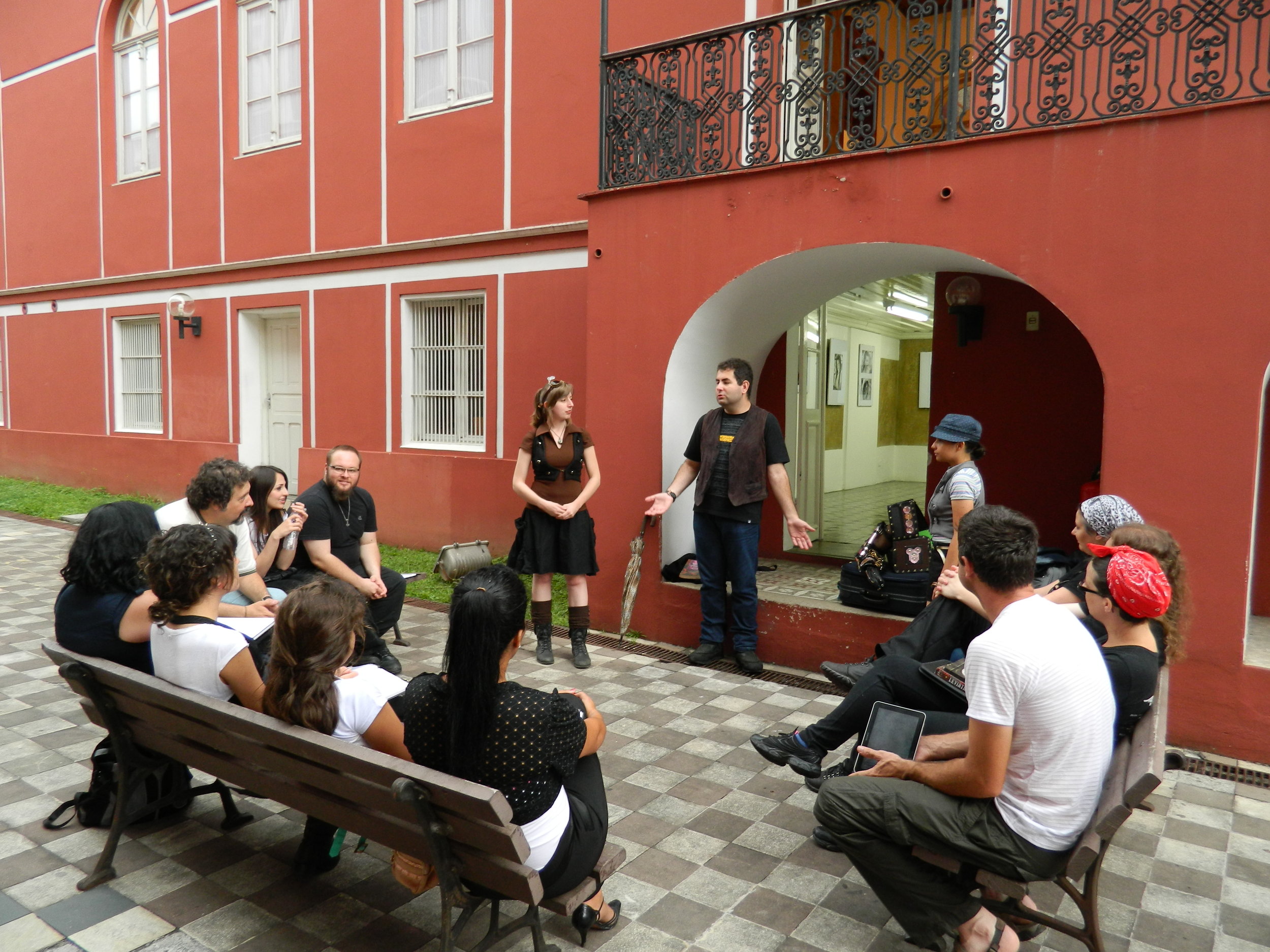
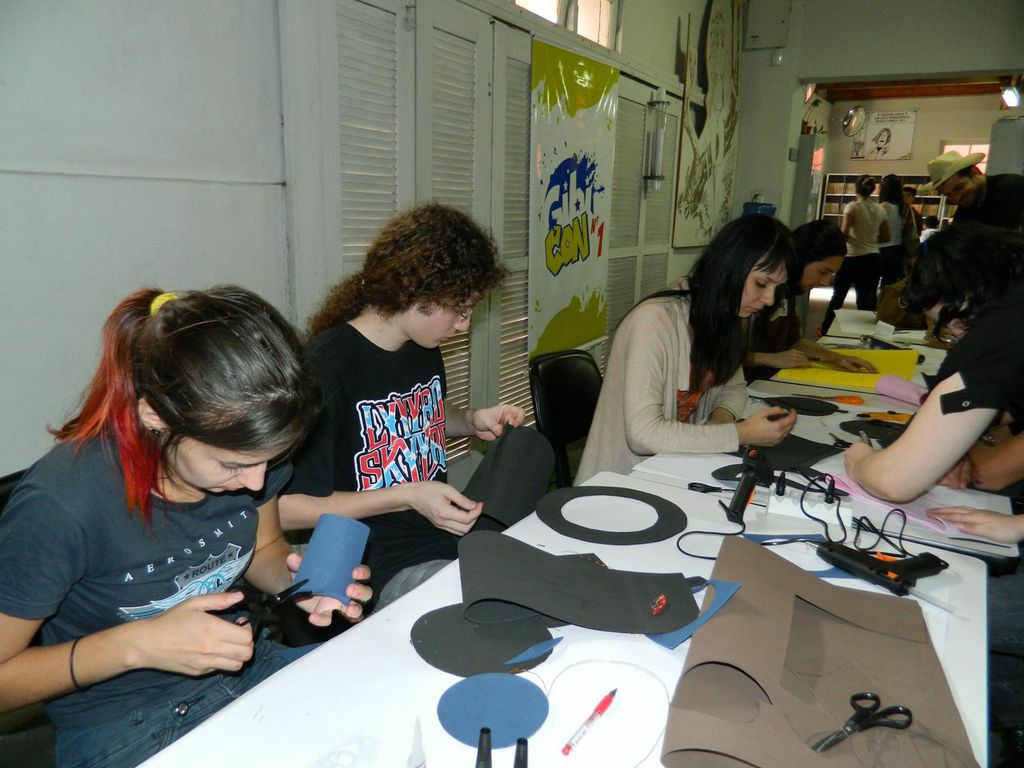
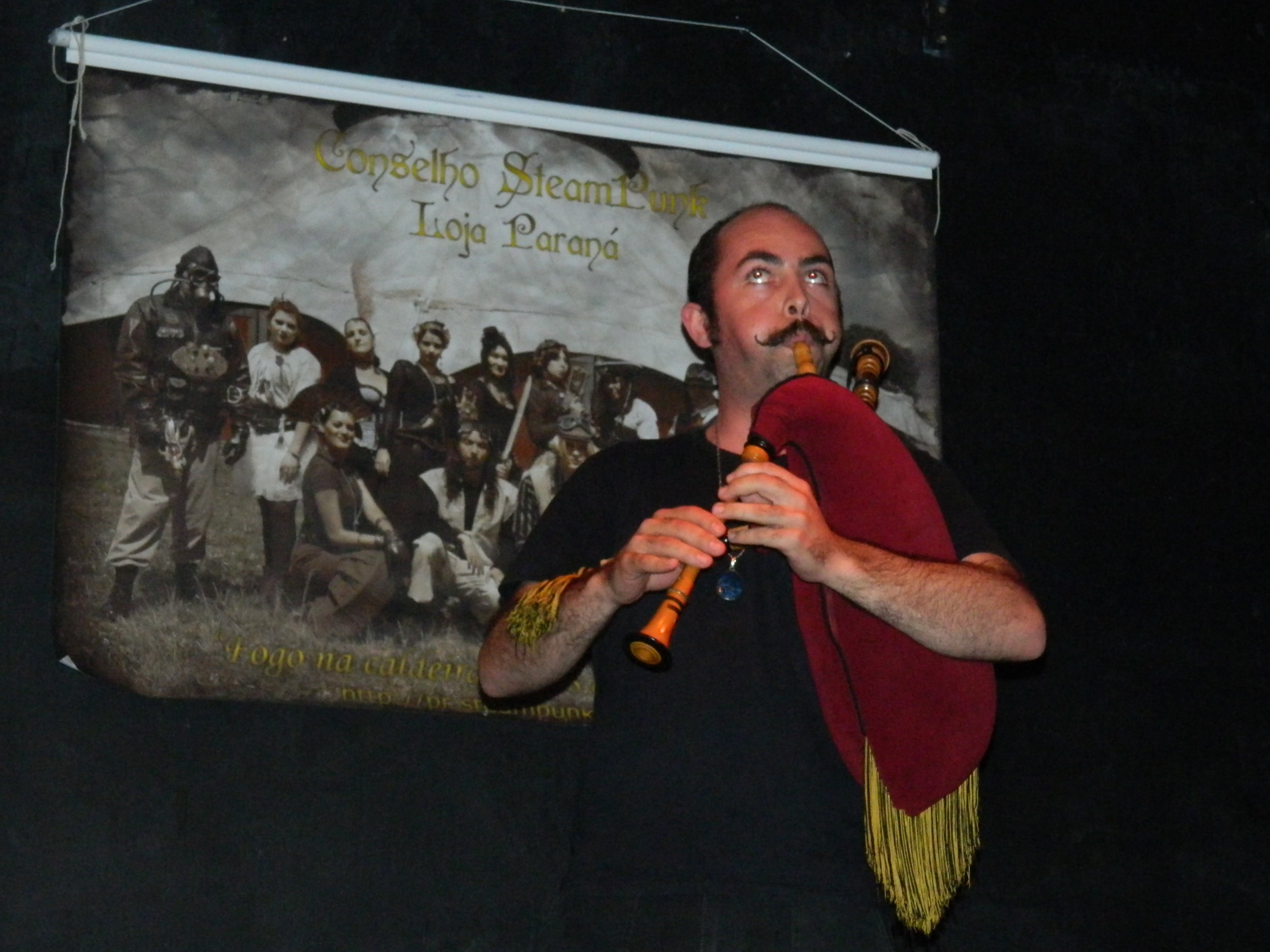
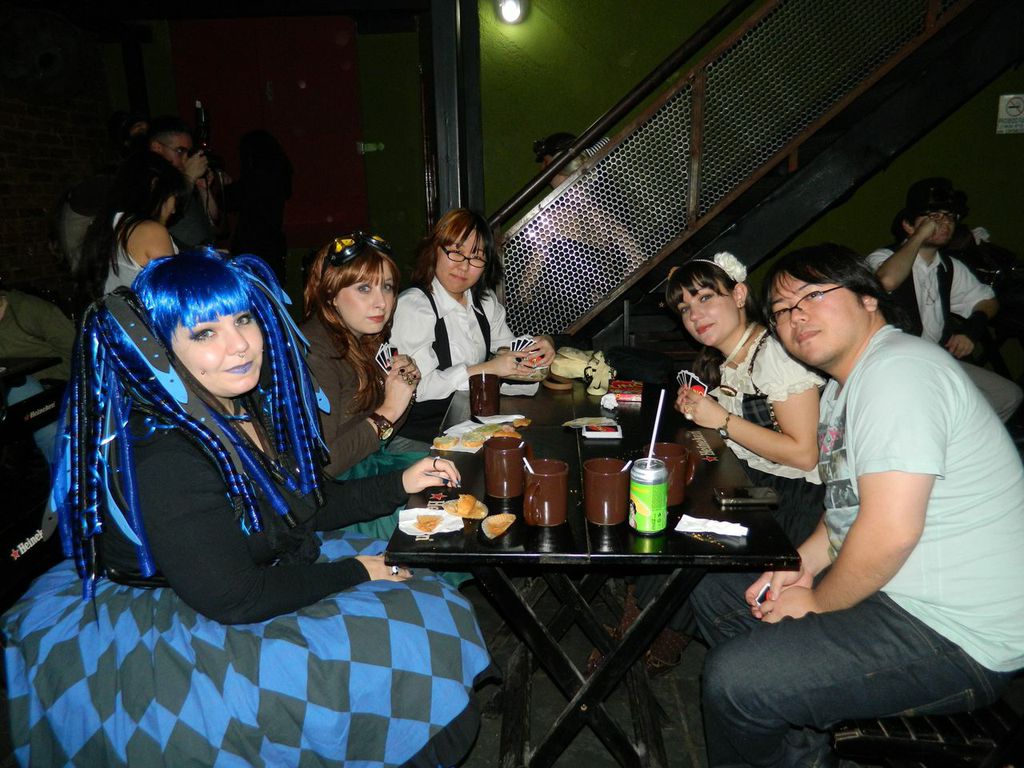 Steampunk event in Curitiba, Paraná, Brazil
Steampunk event in Curitiba, Paraná, Brazil